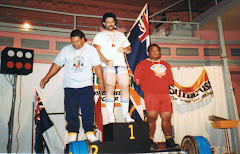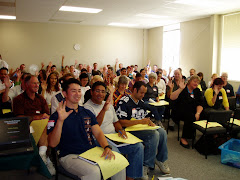
For NZ this is a tragic event which will forever be remembered in our countries history. A country with just over 4.2 million people, we have had very few of these hollywood movie type gun battles.
Why did this happen? What went wrong, for a man to return home after the morning walking his dog to find 3 police man searching his home. He takes exception to this and shoots the officers, who were on a low profile drug search of his home at the time.
What bought this to mind for me was Jan Mollenar was a regular and long term member of the Gym I owned in Napier. He was an unassuming, dedicated weight trainer who I found polite and easy to talk to. What went wrong? How does this and similar events, world wide happen?
I'm not going to write on the Napier tragedy. I'm sure the Clinical Psychologists and Criminologists will have a filed day with Molenaar's case. What I am going to give here is an overview of a topic I have been studying for quite sometime now. I hope you find it both interesting and thought provoking.
- What is it that turns an everyday averge person into a monster, causing unimaginable atrocities?
- What is it that turns staff within an organisation to behave in a synister manner, towards their boss or fellow workmates, causing havoc in the workplace and the deliberate destruction of team moral and synergy?
The cause to the problem could be that you have recruited the wrong person. That is, they are not the right business fit. They do not align with the mission, vision and values of the organisation. Worst case scenario here, is they are just down right nasty. Even
 be a corporate sociopath. It's suggested that 2-3% of our workforce is made up of sociopaths. Many of these people due to their need for control, are attracted to senior management! This brings a whole new outlook to leadership training.
be a corporate sociopath. It's suggested that 2-3% of our workforce is made up of sociopaths. Many of these people due to their need for control, are attracted to senior management! This brings a whole new outlook to leadership training.The trouble a bad apple can cause to a barrel of apples is huge! The best approach is to extract the bad apple fro the barrel and question the apple sorters on "...How the hell did you let this peson in here?"
To sort this out requires a robust recruitment process (way too often lacking and too orientated to behavioural interviewing) and also requires a manager who is able to effectively performance manage the bad apple out.
People are strongly influenced by those they mix with and more so, powerfully influenced by those they are lead by.
 ic processes, laws and rules that are untenable, pay scales that are unfair etc...
ic processes, laws and rules that are untenable, pay scales that are unfair etc...It's the system that breeds bad appples. You are inducted to be bad or even evil, because it is necessary to survive within the system. It is the system that causes the situation, that causes the good appples to go bad and hires the bad apples in the first place.
It is not always the barrel that is the problem. It can be those who represent the system further down the corporate chain of command, are bad apples. Creating situations that cause apples to go bad and hire apples that are similar to themselves or apples that cause no threat to themselves.
Summary
It's important, if conflict is present within a team that the cause is found - and quickly. Here you have 3 options, and it could be an isolated situation or a blender mix of varying degrees of each of the 3 apple examples.
I hope this article helps you in understanding a little, of why people can, and often do turn bad. In understanding what the cause is we can then prescribe a way to rectify the problem. If you do not know this you could mistakenly fix it at one level and it will only be a temporary fix as it wasn't fixed at the correct level needed for sustainable change to take place.
I have inserted below a recording of a famous test by Milgrim reproduced by Derren Brown. Milgrim did 1,000's of studies to find whether people would cause harm to others knowingly, and act completely out of character. It is a very revealing study on how we can be influenced to do the unthinkable.
Viewing Advice: You may find it best to click on play allowing it to "buffer"and then press pause - wait a moment to give the video time to load, then press play - giving you an unbroken viewing of the clip. Hope that helps.

















































2 comments:
Really nice metaphor here mate, like it!
Thanks Al. It's certainly a useful model. Thanks for visiting.
Post a Comment